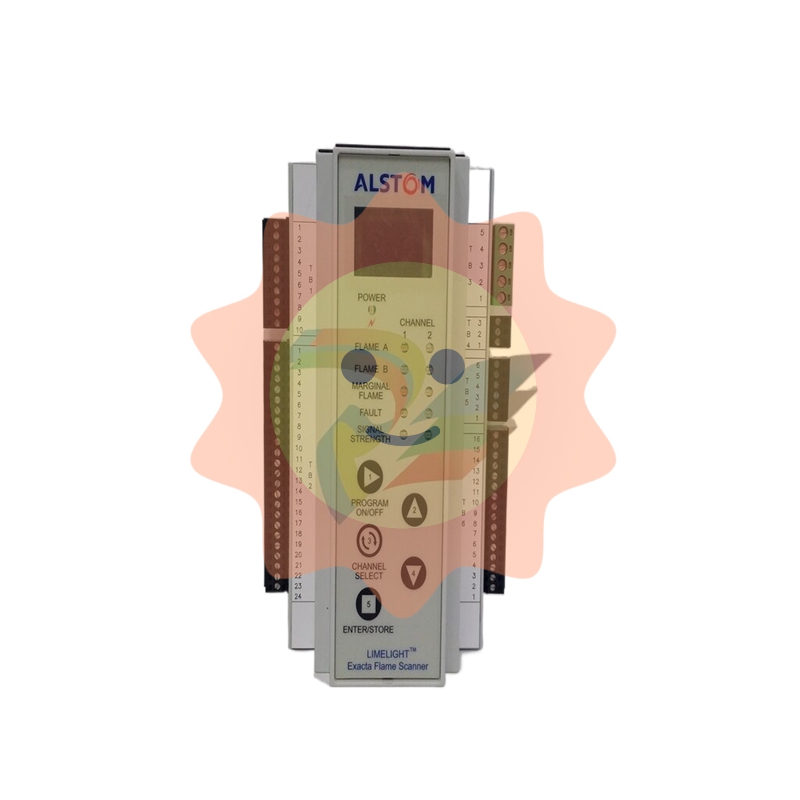Understanding ettringite in cement-based materials and reasonable control
Ettringite (AFt) is a hydrous sulfoaluminate mineral, often written as 3CaO·Al2O3·3CaSO4·32H2O. Ettringite is the early hydration product of Portland cement and the main hydration product of sulfoaluminate cement. In the early hydration process of Portland cement, gypsum reacts with aluminate or ferric aluminate minerals to form ettringite, which delays the hydration of cement and can play an early strength role. In sulfoaluminate cement, calcium sulfoaluminate mineral reacts with gypsum under the condition of water to form ettringite, accounting for 50% to 60% of the total hydration products, which is the main factor determining the early strength development of sulfoaluminate cement. At the same time, ettringite is also the main factor for the expansion of some calcium sulfoaluminate expanders [1]. Ettringstone can be said to be everywhere, not only limited to the well-known hydration products of cement, but the broad scope of ettringstone exists in a wider range.
1. Basic characteristics of ettringstone:
Ettringite crystals belong to the tripartite system, and the cell parameters are c=2.15nm, a=b=1.125nm. The composition of ettringite can be expressed as {Ca6[Al(OH)6]2·2H2O}·(SO4)3·2H2O, and its basic structural unit is -- cylinder {Ca6[Al(OH)6]2·2H2O}6+, SO42- ions and other water molecules are connected with these positively charged cylinders. That is, the crystal structure of ettringite is composed of columns parallel to the C-crystal axis, and the remaining water molecules and sulfate ions occupy the pores between the columns [2-3]. Hartman et al. [4] used deuterium atom (D atom), the isotope of hydrogen, and combined neutron diffraction technology with full spectrum fitting and finishing technology to more accurately determine the positions of all atoms in ettringite crystals, especially the positions of O and H atoms, and gave a more intuitive crystal structure diagram
It is generally believed that ettringite in cement concrete is mainly needle-shaped, but these ettringite crystals are often clustered together in different forms, so radial, annular, spherical or massive ettringite clusters are often observed in the size range of 100~300μm. However, due to the different synthesis methods and conditions of ettringite, the morphologies of the synthesized ettringite are quite different, and some new morphologies are even found, such as tubular, cylindrical and hexagonal columns

2. Synthesis method and influencing factors of ettringite:
At present, the synthesis methods of ettringite are mainly single ore hydration and solution synthesis methods, single ore hydration method generally uses tricalcium aluminate and gypsum or calcium sulfoaluminate and gypsum for hydration synthesis of ettringite, solution synthesis method uses calcium hydroxide and aluminum sulfate reaction to synthesize ettringite.
Theoretically, as long as the relevant ions in the solution reach a certain degree of saturation, ettringite crystals will be formed and precipitated, so the concentration of ions in the reaction solution, temperature, pH and formation space and other factors have a great impact on the formation of ettringite. The effects of synthesis temperature and liquid pH value on ettringite are briefly introduced.
2.1 Temperature
At home and abroad, it is agreed that temperature has an important effect on the stability of ettringite, and the stable temperature of ettringite in cement is about 70℃. YukieShimada believes that ettringite will transform into AFm phase in alkaline solution at 80℃, and the morphology and size of ettringite will decrease with increasing temperature, whether in cement slurry or chemical reagents. However, these studies mainly focus on the stability of ettringite synthesis at different temperatures. The study of Zhang Wensheng et al. showed that the formation of ettringite could be promoted with the appropriate increase of temperature. At 80℃, the reaction basically directly formed ettringite with various morphologies. The reaction ettringite cannot exist stably at 100℃ and will be converted into AFm after a short time.
2.2 pH Value
The stable existence of ettringite in solution depends on the pH of liquid phase, and its stable existence pH range is 10.5 ~ 13.0. Studies have shown that the morphology and size of ettringites synthesized under different pH values are significantly different, but different scholars have different views, because they have different conditions for synthesizing ettringites. A large number of studies have shown that the increase of alkalinity or pH value has a certain inhibitory effect on the formation of ettringite. When the alkalinity of pore solution increases, the concentration of ions required for the stability of ettringite also increases correspondingly. Brown et al. studied the reaction of C3A and gypsum in KOH solution with a concentration of (0.5-2.0)mol/L, and found that the presence of KOH inhibited the formation of ettringite, and the inhibition was most obvious when the concentration of KOH was between (0.5-1.0)mol/L, and even the formation of C-S-H gel adsorbed with Al and SO42- was observed. The study of Zhang Wensheng et al. showed that with the increase of pH value in liquid phase, the length-diameter ratio of ettringite gradually decreased, and the morphology of ettringite changed from long rod to fine needle.

3. The role of ettringstone:
The role of ettringite in cement stone includes two aspects: favorable and unfavorable. Ettringite is often associated with destructive swelling, and some even call it "cement bacillus". Of course, the retarding effect of ettringite in Portland cement, and the active role of ettringite in promoting the early strength development of cement and compensating for shrinkage have also been recognized. Still, there is a lot of uncertainty about the role of ettringite. The effects of ettringite on cement setting behavior, strength and volume stability are briefly described below.
3.1 Influence of ettringite on cement setting behavior
The rapid hydration of C3A is the main reason for the rapid setting of Portland cement clinker, and the addition of gypsum can play a retarding role. Early literature and works generally assumed that the retarding effect of gypsum was due to the formation of ettringite crystals covering the surface of cement particles. As the reaction continued, the ettringite film became thicker. Due to the increase of the volume of the ettringite generated by C3A, cracks appeared in the film. Therefore, ions and water could pass through the film and continue to hydrate with C3A, and the retarding effect ended. Moreover, in the presence of Ca(OH)2, the effect of gypsum retarding is more pronounced because the resulting ettringite crystals are relatively small and better able to cover the surface of the irregular C3A mineral. However, some researchers believe that the retarding effect is not necessarily ettringite, but also may be hydration products such as AFm or aluminum glue. Some researchers even believe that the stick-like morphology of ettringite is unlikely to hinder ion migration, and believe that the slow coagulation is due to the adsorption of Ca2+ or (and)SO42- to the surface of C3A particles, occupying the active site of C3A dissolution, preventing further hydration of C3A. However, regardless of the explanation, it is an important fact that the addition of gypsum can play a better retarding effect on Portland cement clinker.
3.2 Influence of ettringite on cement strength
Whether it is Portland cement or sulfoaluminate cement, ettringite is a hydration product that appears earlier in the hydration of cement, so ettringite has a great impact on the strength development, especially the early strength development. It is generally believed that the formation of ettringite can promote the early strength development of cement. Some researchers have even added ettringite seed to improve the strength of sulfoaluminate cement.
From the perspective of the proportion of components required for the formation of ettringite, the amount of gypsum required for the formation of all C3A in Portland cement is usually much higher than the actual incorporation amount, so under normal circumstances, an appropriate increase in the amount of gypsum will improve the early strength of cement, indicating that ettringite has a promoting effect on the early strength development of Portland cement. Of course, the effect of ettringite on the early strength development of Portland cement is also related to other factors.
Ettringite is the main hydration product of sulfoaluminate cement, so it is very important for its strength development. Due to the high hydration activity and fast hydration rate of calcium sulfoaluminate mineral in sulfoaluminate cement, a large amount of ettringite and aluminum glue are generated in the early stage, and the generated ettringite will quickly crystallize to form a hard skeleton structure. The aluminum glue constantly fills the void to make the cement obtain a high early strength. When Garcia-Mate et al. studied the influence of gypsum types on the performance of sulfoaluminate cement, they found that the content of ettringite was the most important factor affecting the strength development of sulfoaluminate cement, and the early cement containing dihydrate gypsum had the largest amount of ettringite formation and the highest strength.
3.3 Influence on volume stability
The formation of ettringite is often accompanied by volume expansion, which is favorable for maintaining the volume stability of cement-based materials within a certain range, but excessive expansion will cause structural damage.
On the one hand, a lot of literature pays special attention to the damage caused by the expansion of ettringite. For large volume cement concrete projects or high temperature curing concrete products, due to the high internal temperature in the early stage, the formed ettringstone will decompose, and in the later stage of cement hardening, the ettringstone will form again, which is easy to cause cracking and damage of concrete. For sulfate attack, due to the high concentration of SO42- in the external environment, it will enter the concrete and react with AFm or aluminate in the cement stone to form ettringite, causing expansion, which may damage the concrete structure. On the other hand, even if the expansion of ettringite is very large, it can still be used under certain conditions. Ettringite generated by expansion agent or cement components in the hydration process is the most common expansion source. Therefore, using the volume expansion generated by the expansion components of ettringite in the hydration process to compensate for the shrinkage of cement-based materials can effectively restrain its shrinkage cracking, and the favorable expansion generated by ettringite has therefore been effectively applied. In addition, in the preparation of self-stressed concrete using self-stressed cement with ettringstone as the main expansion source, due to the self-expansion of the ettringstone is constrained and the stress is generated. Before the concrete structure or members bear the service load, the load bearing capacity of reinforced concrete products can be greatly increased by applying pressure to the concrete in the tension area. These all make full use of the favorable side of ettringite expansion.
4. Outlook:
At present, the research on ettringite has been more in-depth, but there are still many uncertain factors. Considering the formation of ettringite plays an important role in cement-based materials, it is necessary to carry out further research on ettringite.
1) For the determination of ettringstone, we should not only care about the amount of ettringstone production, but also pay attention to the morphological characteristics of ettringstone, and even the distribution. For the determination of ettringite, the most commonly used is XRD analysis, but when the content of ettringite is small, the use of XRD detection is relatively difficult. The morphology and type of ettringite can be observed by SEM and EDS, but the amount of ettringite can not be determined. TGA can be used to quantitatively analyze the amount of ettringite produced, but its form and type cannot be determined. Therefore, a variety of methods should be used to accurately characterize the amount of ettringite production, morphological characteristics and distribution.
2) Control the formation of ettringite. It is advantageous to form ettringite in the plastic stage of cement-based materials, and the formation of appropriate ettringite after setting and hardening can help reduce shrinkage and improve the volume stability of cement-based materials. When using the expansion energy of ettringite, it is necessary to consider whether its expansion is within the design range, if it is still expanded after reaching the expectation, it will cause incalculable damage. Therefore, in practical engineering applications, ettringite should be reasonably regulated in the process of cement hydration and hardening according to needs, so that the formation time and amount of ettringite can reach the best, so as to give full play to the positive effect of ettringite.
- EMERSON
- Honeywell
- CTI
- Rolls-Royce
- General Electric
- Woodward
- Yaskawa
- xYCOM
- Motorola
- Siemens
- Rockwell
- ABB
- B&R
- HIMA
- Construction site
- electricity
- Automobile market
- PLC
- DCS
- Motor drivers
- VSD
- Implications
- cement
- CO2
- CEM
- methane
- Artificial intelligence
- Titanic
- Solar energy
- Hydrogen fuel cell
- Hydrogen and fuel cells
- Hydrogen and oxygen fuel cells
- tyre
- Chemical fiber
- dynamo
- corpuscle
- Pulp and paper
- printing
- fossil
- FANUC
- Food and beverage
- Life science
- Sewage treatment
- Personal care
- electricity
- boats
- infrastructure
- Automobile industry
- metallurgy
- Nuclear power generation
- Geothermal power generation
- Water and wastewater
- Infrastructure construction
- Mine hazard
- steel
- papermaking
- Natural gas industry
- Infrastructure construction
- Power and energy
- Rubber and plastic
- Renewable energy
- pharmacy
- mining
- Plastic industry
- Schneider
- Kongsberg
- NI
- Wind energy
- International petroleum
- International new energy network
- gas
- WATLOW
- ProSoft
- SEW
- wind
- ADVANCED
- Reliance
- YOKOGAWA
- TRICONEX
- FOXBORO
- METSO
- MAN
- Advantest
- ADVANCED
- ALSTOM
- Control Wave
- AB
- AMAT
- STUDER
- KONGSBERG
- MOTOROLA
- DANAHER MOTION
- Bentley
- Galil
- EATON
- MOLEX
- Triconex
- DEIF
- B&W


email:1583694102@qq.com
wang@kongjiangauto.com

















































